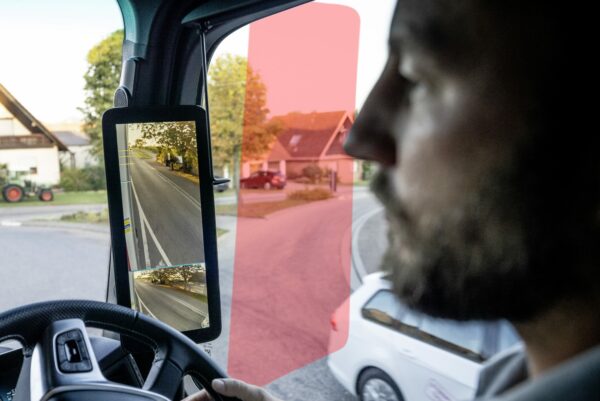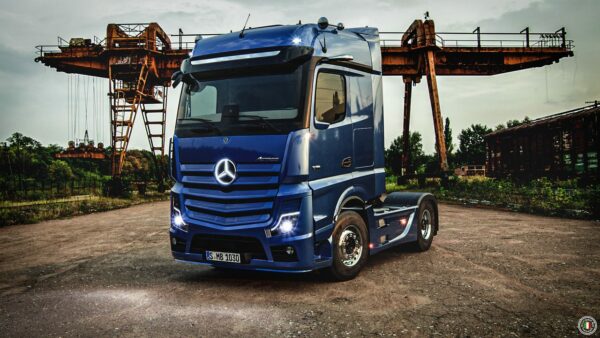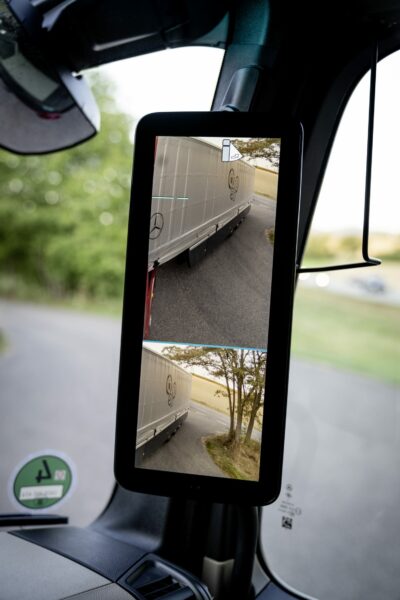Glass wing mirrors have been a feature on cars and trucks for decades, improving safety by reducing blind spots, but can they be replaced by cameras and screens and still be as effective?
How does it work?
Rather than large wing mirrors on the A-pillar, two streamlined cameras are positioned out of the line-of-sight. They project an image back to a large screen affixed to the inside of the A pillar.

The cameras are hinged to help avoid damage.
Advantages of camera wing mirrors
- Removing the wing mirrors results in improved fuel economy through less drag. Estimates are around 1% better fuel economy.
- The mirrors no longer form a large blind spot that makes it difficult for the driver to see small vehicles like motorbikes when approaching a roundabout or turning from a junction, and to see pedestrians when approaching zebra crossings.
- Because the screens are inside the vehicle, there’s no distortion of the image due to rain or condensation on the side window.
- Different views can be set depending on whether the driver is reversing or driving forwards, and (for truck drivers) what type of trailer is attached.
- Graphical overlays can be provided on the displays to help drivers understand how far back other vehicles are in the view – this is the same system used in reversing cameras in cars. This assists when reversing and when changing lanes
- The mirror can adjust for off-tracking so that you can always see the rear of the trailer, even in very tight bends and when reversing.
- The camera and screen can automatically adjust for the ambient light levels, giving a clearer view at night.
- Some systems can show other warnings on the screens, such as blind spot monitoring or where a trailer might cut in and hit a stationary object.
- Passengers see the same view as the driver.
- The camera can provide a security function for the driver if they are in a sleeper cab.
- The cameras often have built-in heaters to prevent fogging.
- The driver’s head doesn’t need to turn quite as far to view the mirror, which means more of the road ahead is in the driver’s peripheral view when looking at the mirror. This is also an advantage for drivers that wear glasses – there’s less interference from the frame of the glasses.
- The systems can have different settings for different drivers.

Disadvantages of camera wing mirrors
- You can’t adjust your view by moving your head. With conventional wing mirrors, you can broaden your view slightly by changing the angle at which you look at the wing mirror. With a camera, it’s like looking at a TV screen the whole time. This means that the blind spots down the side of the truck are fixed.
- Eye contact in the mirrors with other road users like cyclists and pedestrians is impossible. This is a major disadvantage for pedestrians, cyclists and motorcyclists in slow-moving traffic where bikes and motorbikes might filter through, and pedestrians might cross between vehicles.
- It’s another technical thing to go wrong – more expense if they are damaged. However, this should be more than made up for in fuel savings.
- If they fail, there’s no backup because there’s no mirror
- They don’t remove the need to have a front and passenger-side convex mirror facing downwards

